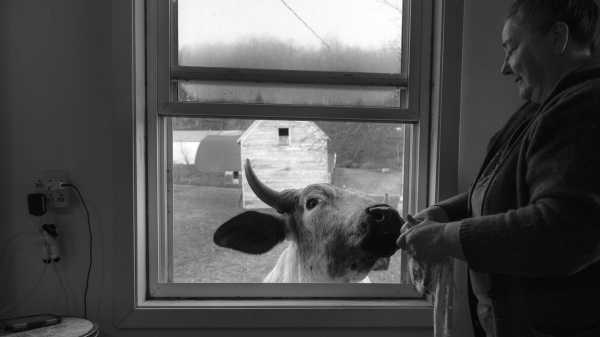
Save this storySave this storySave this storySave this story
There are more than eighty-nine million cows in this country, and one of them is leaning through Aunt Diane’s window. Raj is a Holstein-Brahman cross, but he seems more like a St. Bernard than a steer, following people around, demanding scritches, begging for bananas; his best friend is a horse named Ruby. You can’t see Ruby in Erinn Springer’s playful portrait of her aunt and Raj, but the photograph tells you everything else you need to know about this pair and the woman who photographed them: Springer’s great gift is blending the warmth and intimacy of snapshots with the cold clarity of photojournalism, creating pictures that feel simultaneously casual and staged, familial yet almost anthropological.
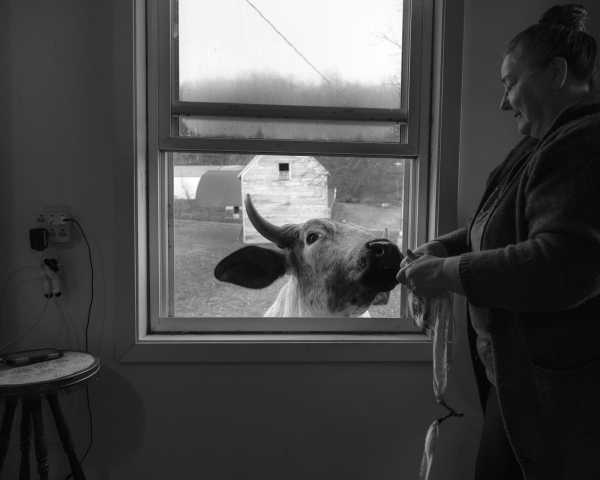
In her new book, “Dormant Season,” Springer pays tribute to a patch of prairie that her family has called home for seven generations. During the pandemic, around the time that she started producing photographs for this magazine and many others, she moved home to rural Wisconsin and began turning her camera on her friends and family and their neighbors. The resulting work is a perfect melding of the museum wall and the photo roll, polished and curated but also knowing and at ease.
Half the people in “Dormant Season” are Springer’s direct relations and half are strangers, but it is impossible to know which are which, since all her subjects appear supremely relaxed, as if she has been looking at them for years. She told me that some of the nonrelatives initially had questions about her taking their picture; they saw cameras as blunt instruments used by the media to invade people’s privacy or turn them into illustrations of various social ills, from the rise of Donald Trump to the death of the American Dream. “I think it’s very easy to go to the Midwest and portray a ‘Fargo’-esque, twisted, dark version of life,” Springer told me. “But I hope people feel a familiarity and tenderness in the way I look at things there.”
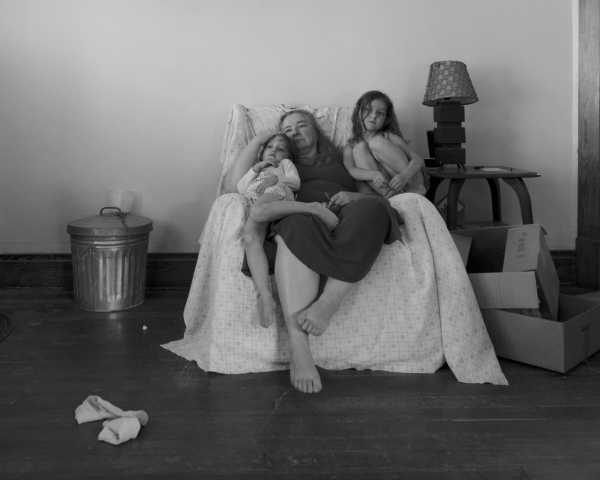
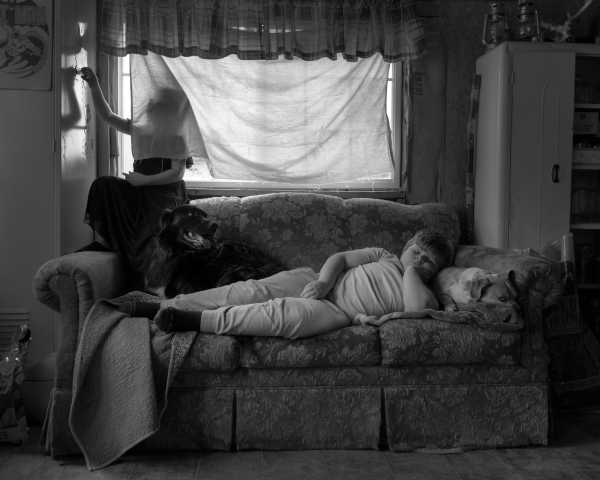
Springer describes these photographs as her way of participating in community life. Everyone else in this part of the country survives their cold autumns and rough winters “by knowing how to get things done,” she said, and so she survived her dormant seasons there by doing the thing she knows best: taking pictures. “An initial spark was the tension I felt about the coexisting realities of where I was from,” she said. “And the book illustrates those contrasts: connection and isolation, beauty and darkness, life and death.”
“Dormant Season” portrays life on the prairie in the honest and loving way that Laura Ingalls Wilder and Willa Cather did in similar places more than a century before. Like those writers, Springer is attentive to the architecture of rural life, and her pictures are dotted with its silos, fenceposts, rafter beams, lofts, clotheslines, and livestock barns. She is also attuned to textures: to corrugated tin, tombstone marble, vinyl siding, weathered clapboard, coverall camouflage, wooden-plank floors, exposed two-by-fours, earthen mounds, gnarled bark, stubble wheat, straw and hay, and wrinkled flesh.
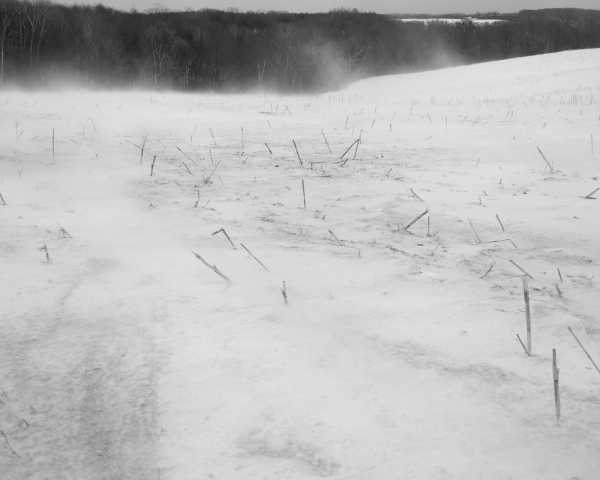
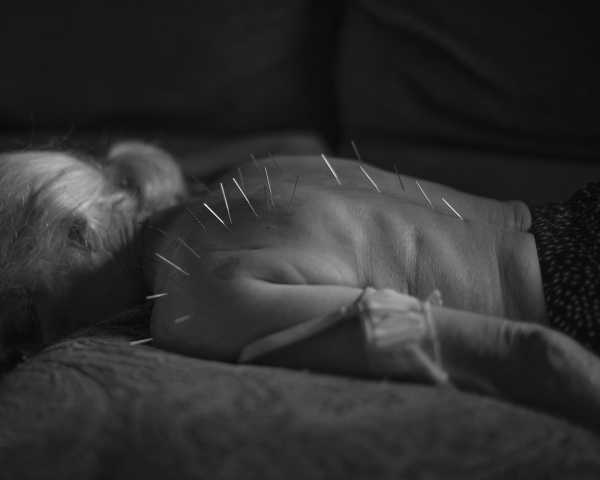
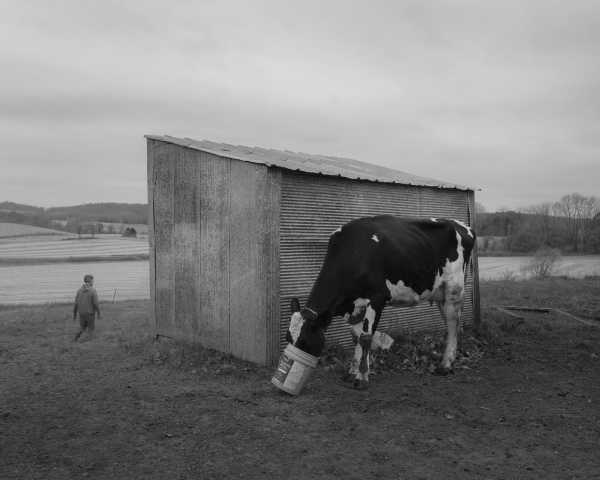
Take the photograph with a dairy cow eating in the foreground. The cow’s coat pattern looks like an explosion in monochrome, black as pitch and white as snow, more saturated than anything in the frame that is man-made. She eats from a five-gallon bucket, paper label peeling from its plastic sides. A farmer in rubber boots walks away from the camera, leaving the trodden pasture for the undulating fields. A short stob and jagged hedgerow bisect the frame, but the strangest lines are formed by the intersection of all the different kinds of tin patched together on a lean-to. Springer said she took the picture in exchange for a few days’ work on the farm, including painting the barn. She met the farmer at the local church where she sometimes went with her mother, an elementary-school teacher whose family first homesteaded here in the middle of the nineteenth century. Back then, Wisconsin was barely a state, only a few years old, home to a young man named Frederick Jackson Turner, whose experience in the wilderness outside the town of Portage would inform his influential essay “The Significance of the Frontier in American History.”
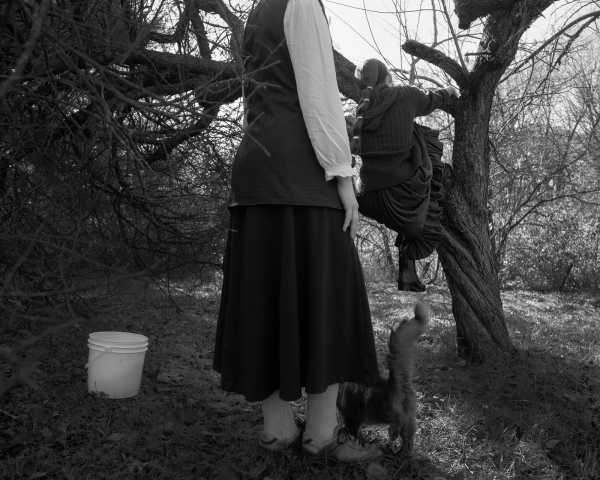
Springer’s own family settled in Dunn County, and one of her pictures depicts another barn, this one raised by her great-great-great family members, but recently given new life. She visited that original homestead one day in the spring with her uncle John and cousin Kyle, who were there to load soybeans, and then returned several times on her own, including in the fall, when she captured one of the scenes in the book. “There were about fifteen kids, all ages, six to seventeen or eighteen, and they were running from the granny house they’d built on the farm that one of them had turned into a one-room school. They were running from their school to the barn, and I followed them into the barn. They were playing, swinging from the beams, eating lunch, having their recess up there.”
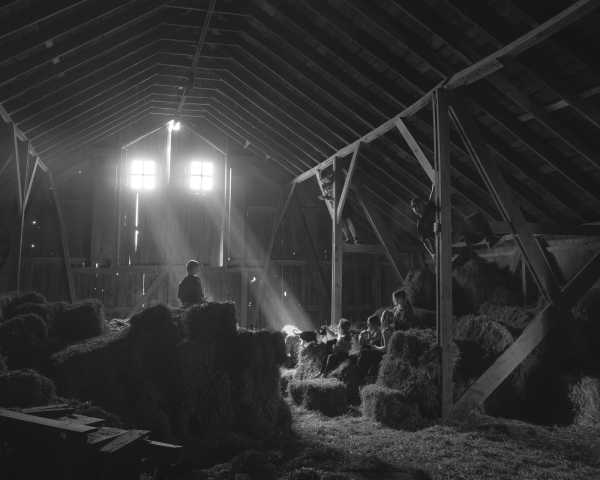
The picture Springer eventually took of that farm school features a passel of children gathered like a choir of angels, sitting on hay bales between their school lessons, bathed in afternoon light as if in a Renaissance painting. The photographs in “Dormant Season” are black and white, but that hint of nostalgia feels representative of rural life, not feigned. Around the edges of sweet embraces, snowy footprints, and storybook farm scenes are cell-phone chargers and television antennas, hot plates and hunting rifles, acupuncture needles and DVDs. Underwear and canning jars can be seen along with drywall and sheets of plywood; nobody is wearing their Sunday best, but the laundry hanging on the line is crisp and clean. In one picture, an elderly man rests on a couch that has been made into a bed while his elderly dog does the same on the floor beside him, a stack of bedding elevating the dog almost to the man’s height. In another, a living room has been taken over by a hospital bed, but the dignified man sitting near its side rail holds a puppy as two others play on the floor.
If this part of Wisconsin is anything like the area where I grew up, then the hospital bed might have been brought there by the Lions Club, moved from house to house by volunteers as men and women recover from heart attacks, strokes, and accidents like the one Springer memorializes in another photograph of someone’s thumbless, calloused hand resting on a pillow. Maybe the Rotary Club has built a wheelchair ramp outside the front door of one picture, and maybe the boys playing beneath the field-dressed white-tailed deer in another will deliver butcher-paper-wrapped venison as part of their 4-H service project. Perhaps the floral-patterned couch, looking like a life raft with two children and two dogs crowded onto it, came from a Habitat ReStore. Springer’s photographs are so pleasing in part because they invite endless speculation about their inner logic and external relationships: which children go with which adults, whether those dark specks are tracks in the snow or birds in the sky, how fingerprints can look so much like ghosts, whether the lake is frozen enough to drive a car across it, whether the eggs are hard-boiled or poached, which farmer takes care of which fields, whether the calf is newborn or stillborn.
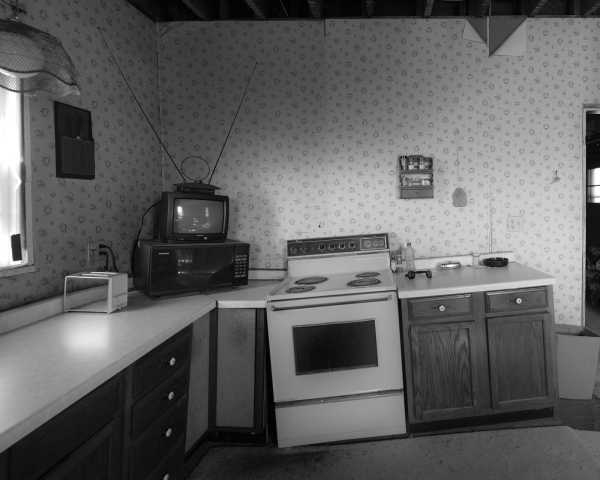
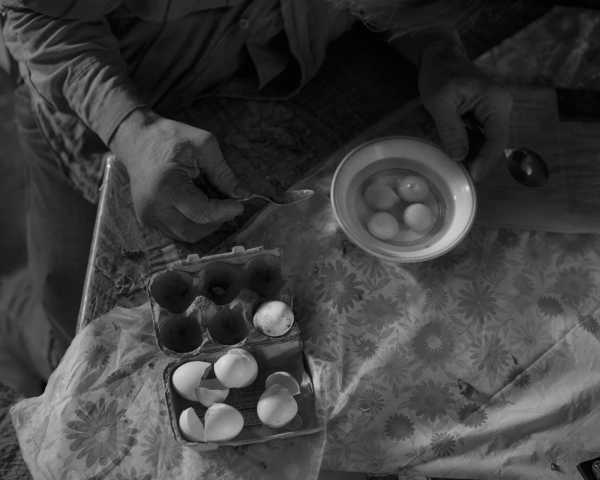
Springer has the answers but keeps them to herself. “Dormant Season” is about a part of the world she knows well, and wants us to know, too, even while wanting to protect this place from outsiders. There are no titles or captions in these pages, just the photographs—which, like all good art, both demand and reward our curiosity. The absence of additional information makes the images feel at once more mysterious and more specific, like a cigar box full of snapshots you find at a flea market and bring home to study, wondering about the people in them. “The title was originally plural—‘Dormant Seasons’—which was a nod to the seasons of our lives that are dormant within us,” Springer told me, “like how I moved to New York, and some people knew I was from rural Wisconsin, but that’s all they knew, not all this.”
Likewise, when Springer came home, people there knew she was a photographer but did not necessarily know why she wanted to take their pictures. “I’d always bring Andrew Wyeth books with me,” she said. “If I described my photographs as sketches like his, they understood what I was trying to do, why I was interested in photographing them.” She was inspired by other painters, too, including John Steuart Curry and Winslow Homer, and although they painted in color, she achieves something like their austere style through her striking use of monochrome, the drear of autumn its own atmosphere in her portraits and the blur of winter its own mood in her landscapes. “Regionalist American painters have this poetic perspective on the natural world,” she said, “and it parallels the way I was looking at things.”
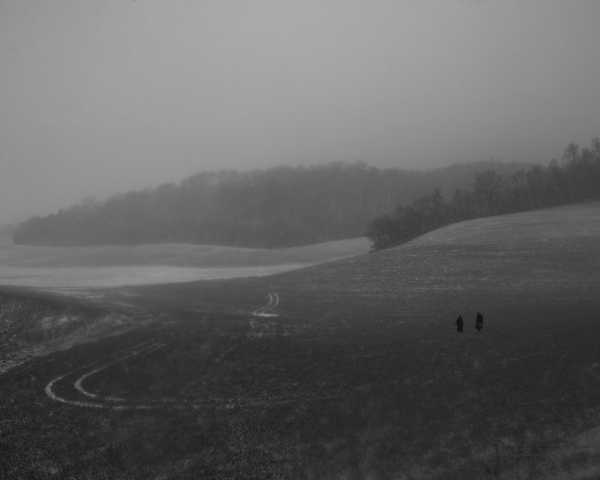
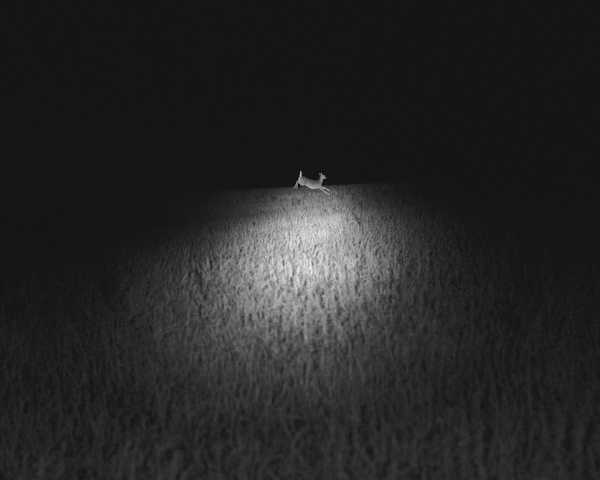
In one of my favorite pictures, Springer shows us a homing-pigeon loft. The symbolism is as dense as the feathers: the birds captive but free, looking like doves but actually a more humble species, their individual houses carefully made but covered in excrement, their window letting in chilly light but obscuring the outside world. Most of the birds are perched and still, but two of them are incandescent with motion, almost rapturous. The photographer has come home, too, of course, and by rights should become synonymous with it. If the Sea Islands belong to Carrie Mae Weems and rural Virginia to Sally Mann, this part of Wisconsin can now be said to belong to Erinn Springer.
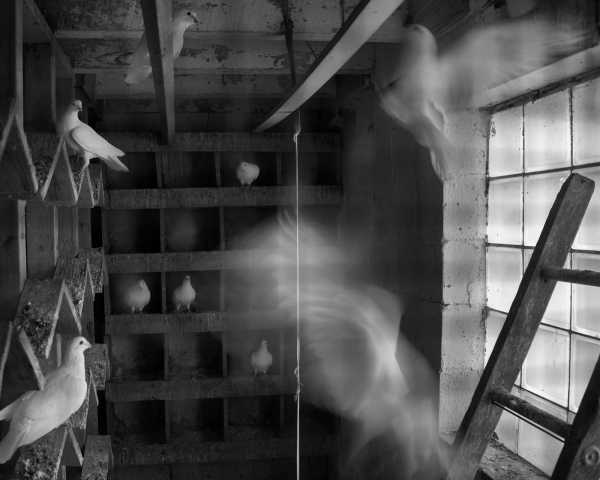
Sourse: newyorker.com






